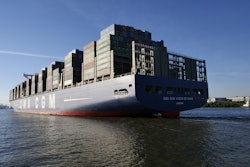
On August 29, three labor unions, representing approximately 15,000 railroad workers,reached a tentative agreementwith the railroads. The agreement now goes to labor members for their ratification.
According toreports, nine other unions, representing approximately 130,000 workers, have yet to reach an agreement. The negotiations began in 2020.
Presidential Emergency Board recommendations
After mediation with the National Mediation Board failed earlier this year, President Biden initiated aPresidential Emergency Board(PEB) in July to provide recommendations to help the parties come to a resolution.
The PEBrecommendations were released on August 16, which started a mandatory 30-day cooling-off period.
The PEB report suggested that — before the PEB was created — the two sides’ proposals widely diverged in value by more than $9 billion.
After working with both parties, the PEB made several recommendations to help resolve the dispute, including a 24% compounded wage increase over five years (some retroactive).
The wage-increase recommendation was 7% above the carriers’ offer and 7% below the unions’ offer, but also included annual service-recognition bonuses.
Other recommendations include removing the cap on monthly employee healthcare contributions so that they equal 15% of the plans' overall cost of providing covered benefits, and jointly rebidding contracts to ensure that current costs are competitive.
September 16 deadline approaching
If the railroads and unions have not reached agreement by September 16, theRailway Labor Actallows the parties to enter a “self-help” period, which allows for actions such as strikes and lock-outs.
Because the start of the self-help period coincides with the start of the harvest season, grain shippers could be especially impacted.
According toreports, America's rail network is already feeling the strain from a year's worth of record-breaking imports, and rail backlogs are a leading contributor to congestion at key U.S. seaports.
Throughout 2022, agricultural shippers have dealt with significantlydeteriorated rail service.
TheSurface Transportation Board(STB) held a two-day hearing in April, with testimony from agricultural groups, including theNational Grain and Feed Association (NGFA)describing costly ongoing problems.





















